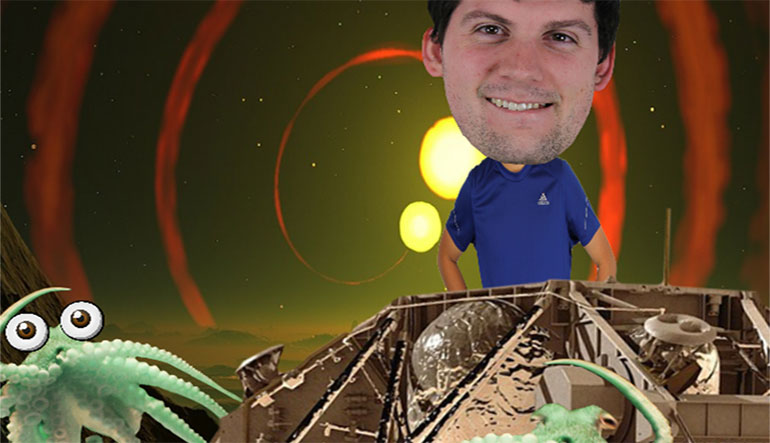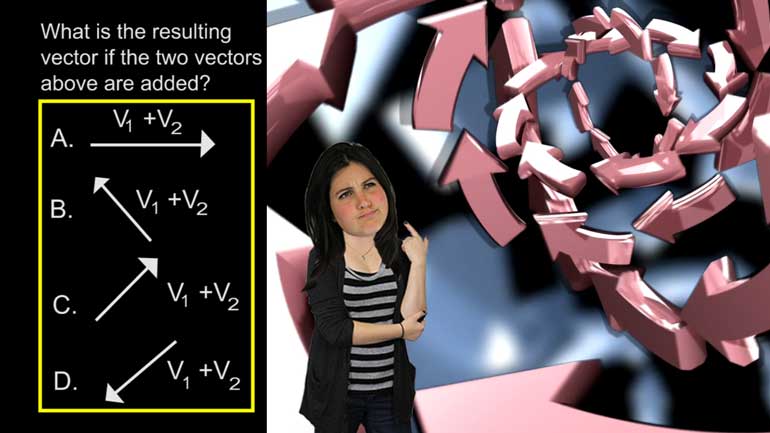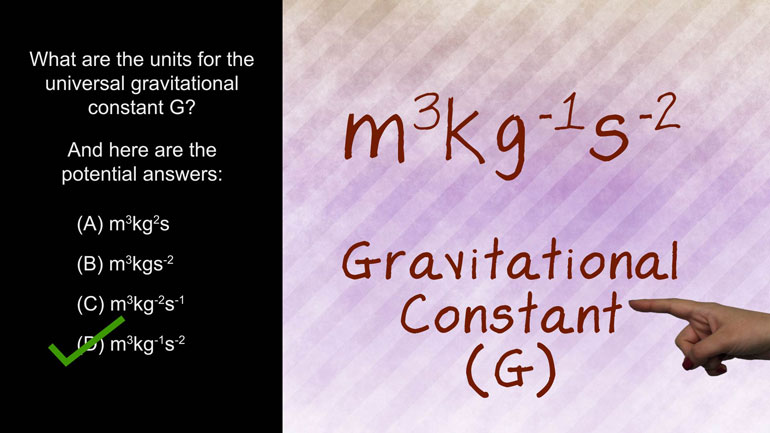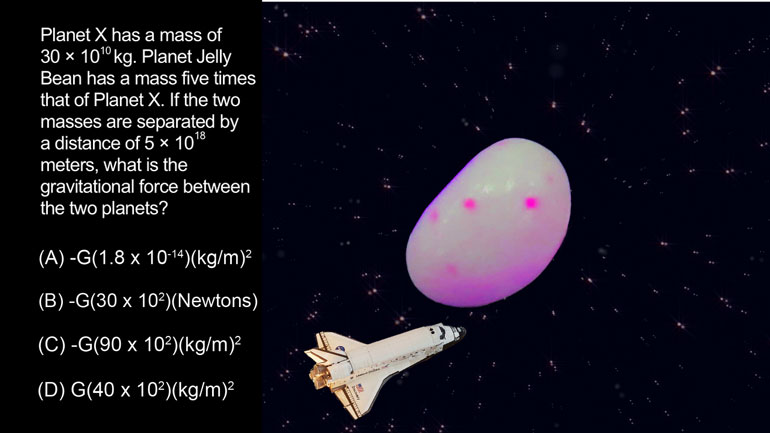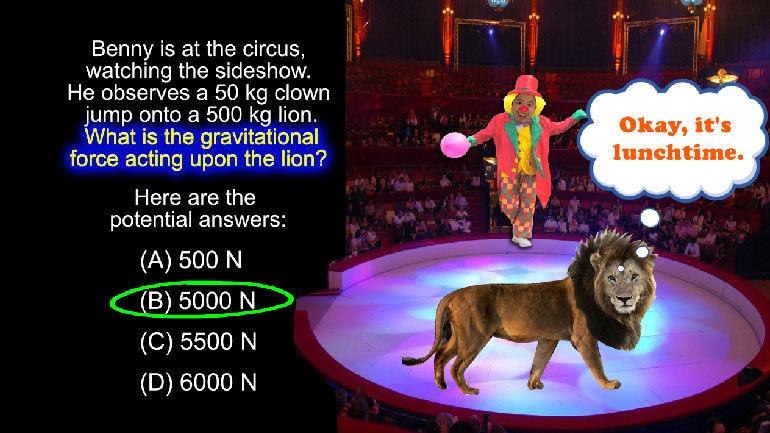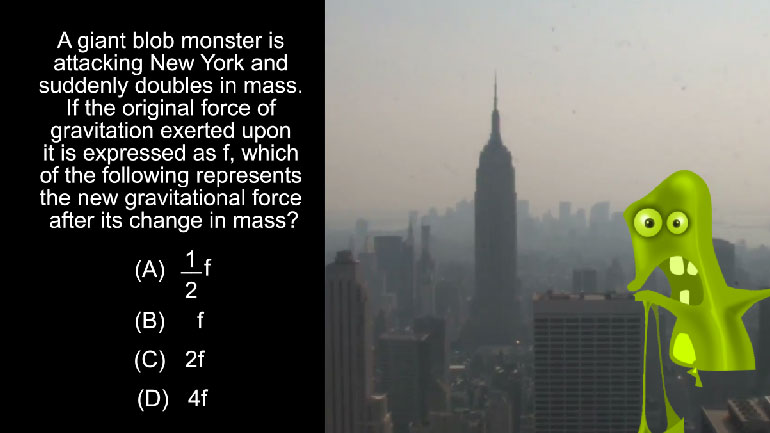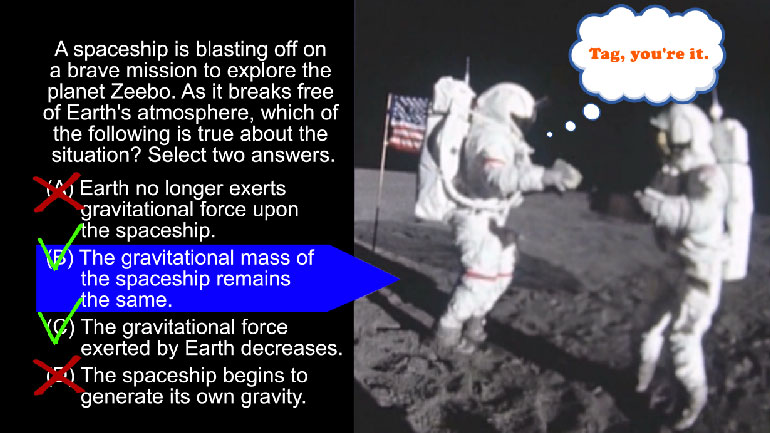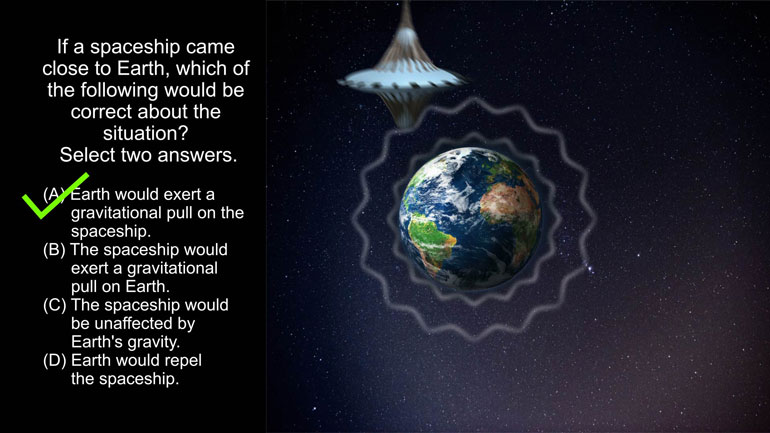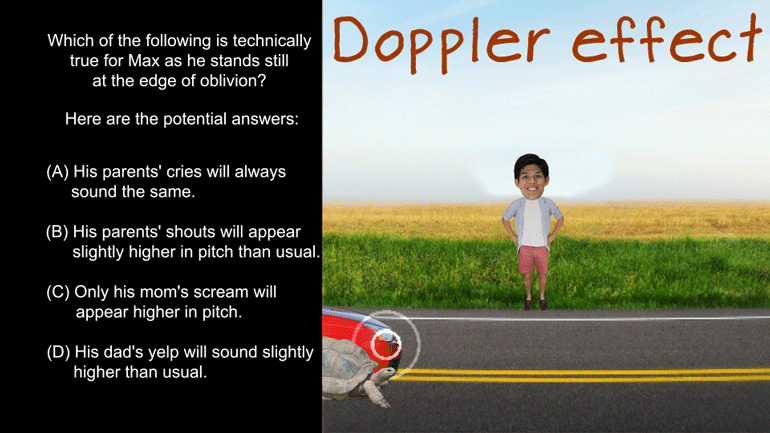ShmoopTube
Where Monty Python meets your 10th grade teacher.
Search Thousands of Shmoop Videos
Fields in Space Videos 15 videos
We've heard of some crazy dieting fads, but leaving the planet may take the cake. We don't suggest you do that, but we do suggest you answer t...
Don't let this question about gravitational forces get you down! Yeah, yeah...that was an easy joke. You get what you pay for.
THE EARTH'S MASS IS ABOUT TO DOUBLE. Sorry for the extreme tone; we just want to make sure you understand the...gravity of the situation.
AP Physics 1: 2.3 Fields in Space 232 Views
Share It!
Description:
AP Physics 1: 2.3 Fields in Space. What is the gravitational force between the two planets?
Transcript
- 00:00
Thank you We sneak and here's Your shmoop too sure
- 00:05
brought to you by jelly beans and putting strawberry jelly
- 00:08
on a bowl of pinto beans is just not the
- 00:10
same You're just gonna have to trust us on this
- 00:13
one All right planet axe has a mass of thirty
Full Transcript
- 00:18
by ten to the tenth kilograms Planet jelly bean has
- 00:21
a mass of five times out of planet acts If
- 00:24
the two masses air separated by a distance of five
- 00:28
by ten to eighteen meters what is the gravitational force
- 00:33
between the two planets And hear the potential answers All
- 00:38
right Well first of all planet jelly bean sounds delicious
- 00:41
Unless it's licorice flavored in which case it should be
- 00:43
renamed planet No thanks Before we get to dessert let's
- 00:47
figure out the gravitational force of these planets Pretty much
- 00:50
everything in outer space is really big and really far
- 00:52
apart So the numbers were dealing with in these calculations
- 00:55
are hard to even imagine Lucky for us physics helps
- 00:58
us make sense of the universe To calculate the force
- 01:01
between two objects The formula we use is as follows
- 01:05
force equals the gravitational constant times the mass of the
- 01:09
first object times the mass of the second object divided
- 01:13
by the square of the distance between them It looks
- 01:16
a little something like this thing Yeah all right A
- 01:19
quick aside the negative sign in front of the equation
- 01:22
indicates that the forces moving in words that is if
- 01:25
the planets were repelling each other the negative sign wouldn't
- 01:28
be there So now we can just plug the numbers
- 01:31
into the equation And when we put these numbers in
- 01:34
our fancy calculator like this we get a fancy solution
- 01:38
like this The force of gravity equals negative g Times
- 01:42
one point eight times ten to the negative fourteenth times
- 01:47
Kilograms per meter squared Cool But that mouthful is our
- 01:52
answer which in this case is option a If we
- 01:55
were to use the gravitational constant in the full numerical
- 01:57
form while then the answer would be in newton's like
- 02:00
option b But in this case we're not expanding the
- 02:03
constant so that wouldn't be the correct unit of measurement
- 02:06
here Oh if there really were a planet jelly beans
- 02:08
there'd probably be a lot more people interested in space 00:02:10.83 --> [endTime] travel
Related Videos
AP Physics 1: 2.5 Changes and Conservation Law. At what point(s) in this situation is energy lost in any form?
AP Physics 1: 1.4 Waves. Which of the following is technically true for Max as he stands at the edge of oblivion?
AP Physics 1: 1.4 Changes and Conservation Laws. Find the current across R2.
AP Physics 1: 2.4 Changes and Conservation Laws. Which of the following circuits should the students use?
AP Physics 1: 1.5 Waves. What can possibly occur when the two waves reach each other?
